The Phantasmagorical Territory of Hornstrandir in Iceland
For my eighth Icelandic adventure, I decided to forego the exciting places around the Ring Road and head to the phantasmagorical territory of Hornstrandir in Iceland, which I had often gazed at on the horizon during my many trips to the Westfjords, but which I had yet to visit.
My attraction to expanses of white and northern lights means that I tend to choose the winter season to visit Iceland, but access to the remote Hornstrandir Nature Reserve is only possible from mid-June to mid-August – and then only by boat – making summer the sole option. I, therefore, booked my plane ticket for 21st July.
The crucial thing about heading “into the wild” is that you should be entirely autonomous: no resupply of food or other essentials, no electricity, no internet or telephone connection. You have to plan your expedition down to the tiniest detail, especially if you are going solo.
It all begins in Ísafjörður, the most northerly city in Iceland, which can be reached from Reykjavik by plane, bus or car. I chose the latter option, thanks to my friends at Lagoon Car Rental, who loaned me a Subaru Forester four-wheeler, which was ideal! The drive from the capital takes five to six hours. The best thing about renting a car is that you can include a road trip through the sublime Westfjords, of which I never tire.
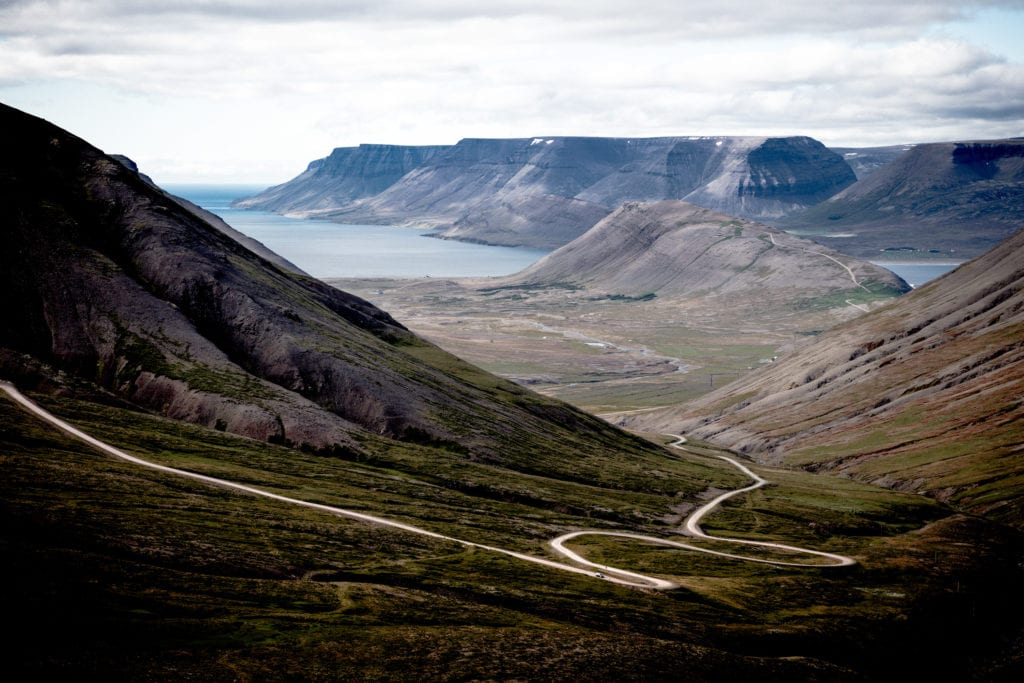
The boat to Hornstrandir can drop you at various places, from Hesteyri, the closest point, to Hornvik, the furthest. I chose the latter. It takes around three hours to reach Hornvik, and it feels like the end of the world.
This huge nature reserve (580 km²) is a fabulous adventure zone for hikers. They set off laden with bulky backpacks and hiking poles, but I realized I wouldn’t be able to carry all my photographic equipment, tent and food (around 25 kilos in all) through those hills and valleys. So I decided to bivouac at Hornvik and explore in different directions from my base camp.
It is possible to make a day-trip to Hornvik (a three-hour boat trip in the morning, and a three-hour trip back, leaving at 4 pm), so avoiding having to camp, – but this leaves you very little time to explore. You can also camp out overnight if you go on a group trip with a tour operator, where everything is organized for you.
I made another choice since I wanted to take the time to immerse myself in nature, cut off from the rest of the world, to experience as much a personal adventure as a photographic one. If such a Robinson Crusoe challenge suits you, then simply buy an “unaccompanied” ticket, without forgetting this all-important detail: the boat only returns every five days. Better not miss it!
We left on a Sunday morning at 9 am, and there were twenty of us clambering aboard. I took a place on the rear deck so I could take photographs during the crossing. There were people from many different nationalities around me, with radiant faces and smiles. We all knew this was going to be a great adventure.
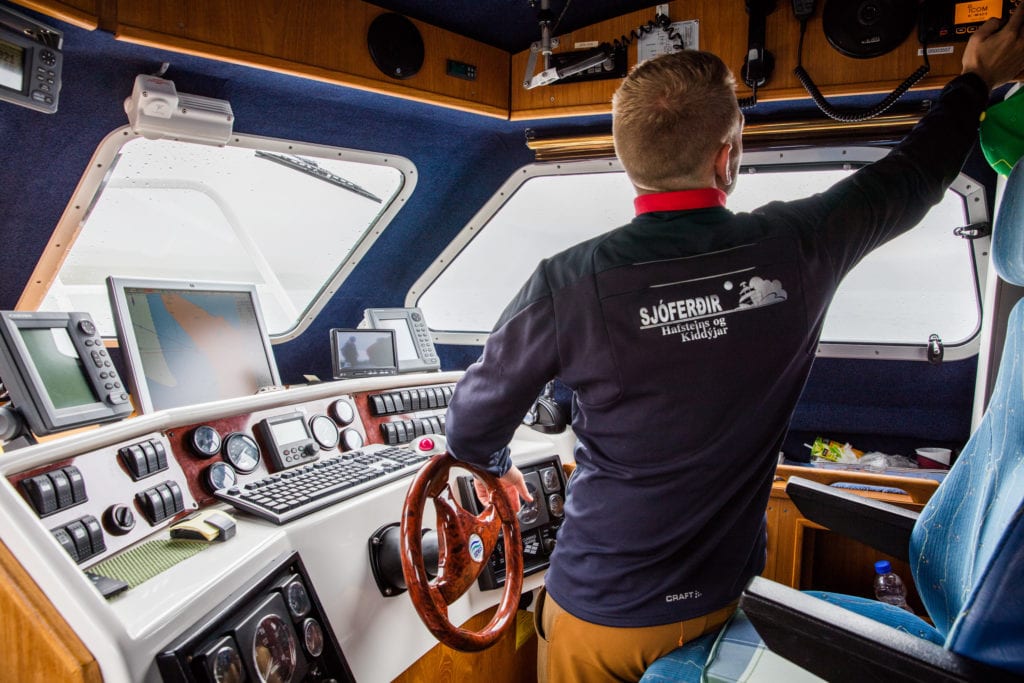
A small inflatable boat unloaded us on the pebble beach at Hornvik Bay. I immediately set off towards the camping area about a kilometer away (it actually took me two return trips).
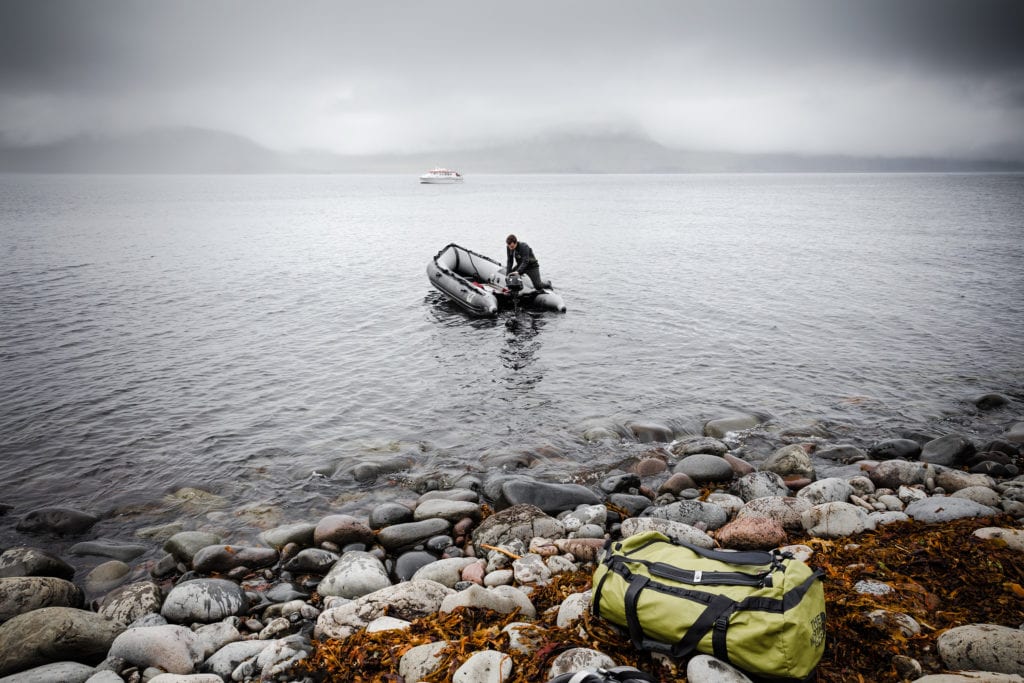
From the path, I spied a campsite – the Arctic Fox Centre (based in Sudavik) that carries out fieldwork. I would go and have a cup of tea with them on the fourth day.
When I arrived at the camping area, I saw just a single large tent very close to a stream. After having pitched my own, I went to say hello to the only neighbor in sight:
– “Good afternoon. I’m Michael, photographer.”
– “Nice to meet you, Michael. My name’s Tobias and I’m a wildlife filmmaker.”
– “Have you been here a long time?”
– “Yes, nearly two months now.”
– “Two months here on your own?! What are you working on?”
– “I’m making a film about Arctic foxes for German television. I’m used to it, you know. I already spent two months here last year! And what about you? What brings you here?”
– “I’ve come to take photographs, of course, but also to do research for my map of Iceland.”
– “Michael, was it you who produced this map of Iceland for photographers? Everyone who comes here has a copy with them!”
– “Yes, that’s me!” (as surprised as I was flattered)
– “That’s great! Sit down. Would you like a tea or a coffee?”
There followed five days of exchanges, of chatting about Iceland and the numerous places we had both visited, including Siberia. I must admit I was happy to have Tobias to keep me company, and indeed it was reciprocal since one thing is for sure: this is a rainy part of the world, where clouds hug the fjords and the fog never seems to clear away. Over the five days of my adventure, it rained for four, with zero visibility. I can see why Tobias had to stay there so long! You have to learn to be patient.

So what does Hornstrandir in Iceland look like? Well, it is how I imagined: wild and magnificent, with breathtaking cliffs, beaches of black sand scattered with driftwood, waterfalls in the distance and thousands of birds gliding overhead on the wind. You feel like you’ve traveled back in time a million years. It is strangely silent all around. The realm of Mother Nature.
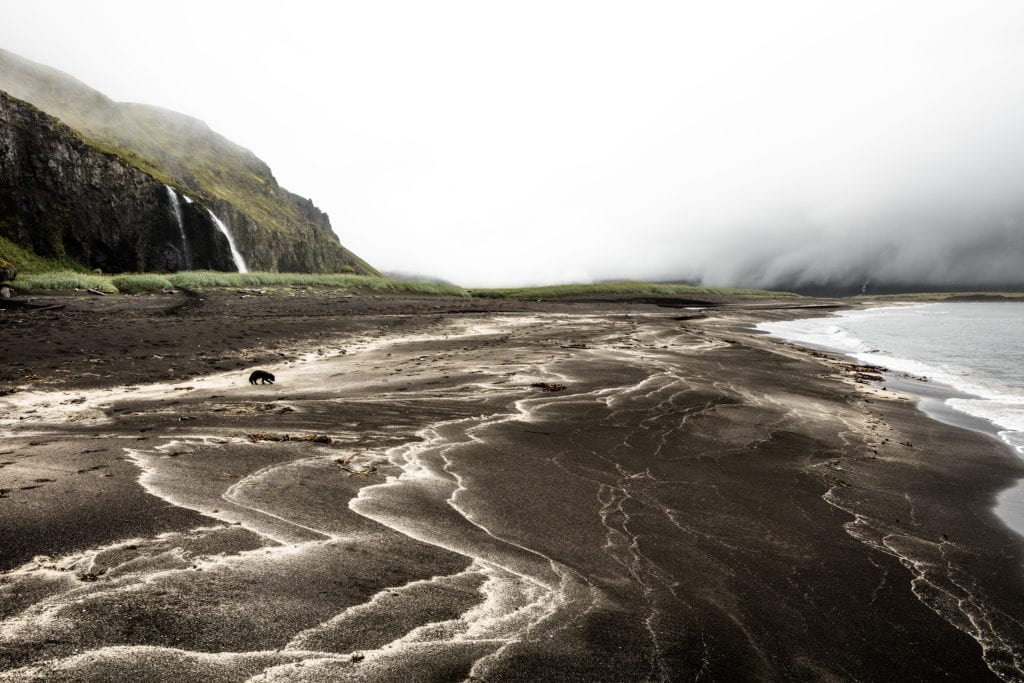
I had set myself four goals for this stay:
1. Survive this adventure in order to be able to tell you my story.
2. Photograph Arctic foxes, since Hornstrandir is a place of choice to observe them.
3. Bring back some images of Hornbjarg, the most majestic cliff in the country.
4. Visit Latravik lighthouse, a little further south. Lighthouses have always excited me, and I couldn’t imagine leaving without having admired it.
So did I meet my goals?
1. I am still alive! The cliff edges flake away, the paths become very slippery after the rain. You have to remain cautious, and humble.
2. I experienced some magical moments observing Arctic foxes. They are such adorable, gracious and playful animals.
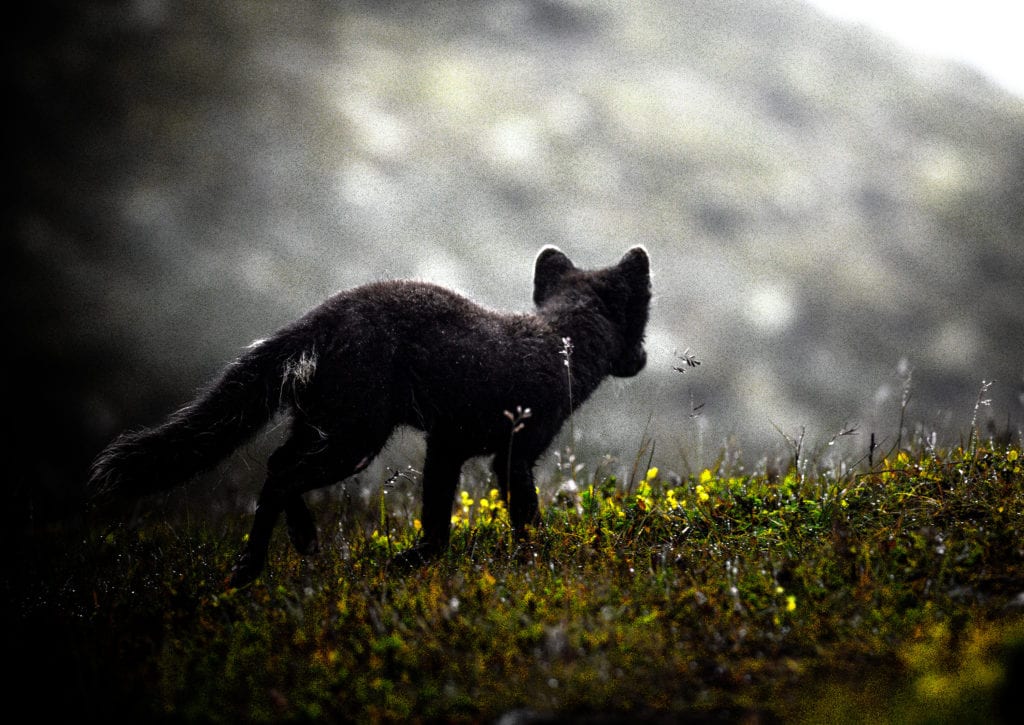
3. The cliffs lay hidden for several days, and it was infuriating to know that they were right there, within reach of my gaze, yet invisible. But everything turned out right on the fourth day, and I was finally able to catch a glimpse of this legendary rock formation, the “king of cliffs!”

4. As for the lighthouse, I reached it on the last day, taking advantage of the ferry’s departure at 4 pm. I couldn’t spend as much time there as I would have liked, for fear of missing my boat, but I was at least able to capture a souvenir of it.
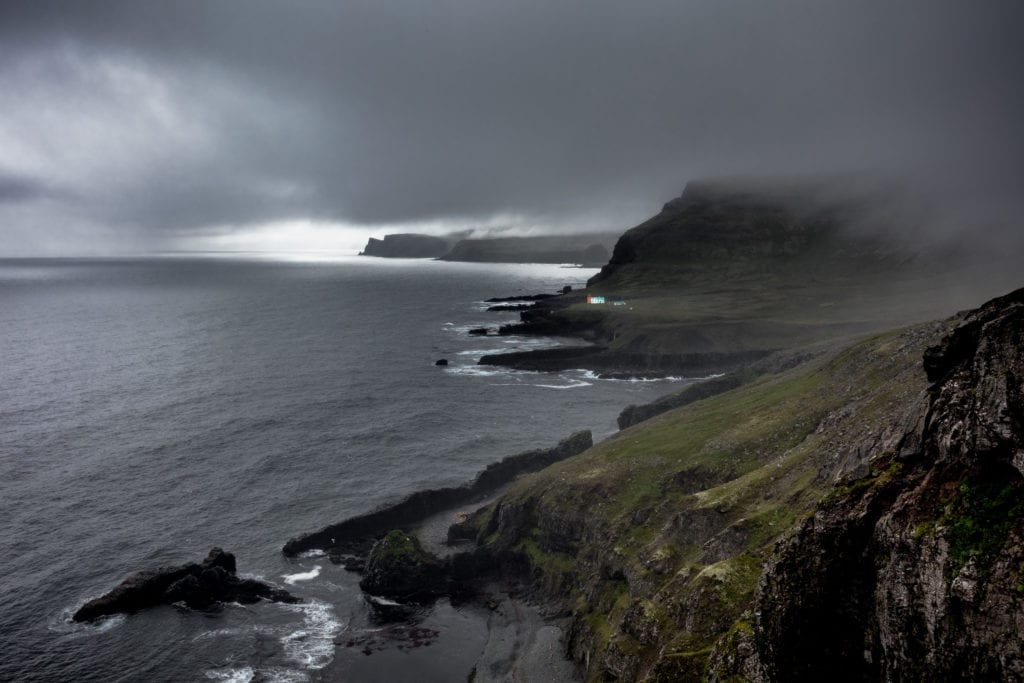
That was it for my five days. How pleasant it was to be but a passing guest, and what a privilege to experience such a precious place, an untouched land where nature is preserved. I left Hornstrandir with the feeling of having once more communed with this fascinating country and overjoyed to have explored something of its secret garden this time.
A travel story by Michael Levy about experiencing Hornstrandir in Iceland
More info:
Map of Iceland: www.international-photographer.com/maps/iceland/
Boat-Trip to Hornstrandir: www.westtours.is/trip-categories/boat-schedules/
The Arctic Fox Centre in Sudavik: www.melrakki.is/about_us/
© MICHAEL LEVY – INTERNATIONAL PHOTOGRAPHER 2016
Back